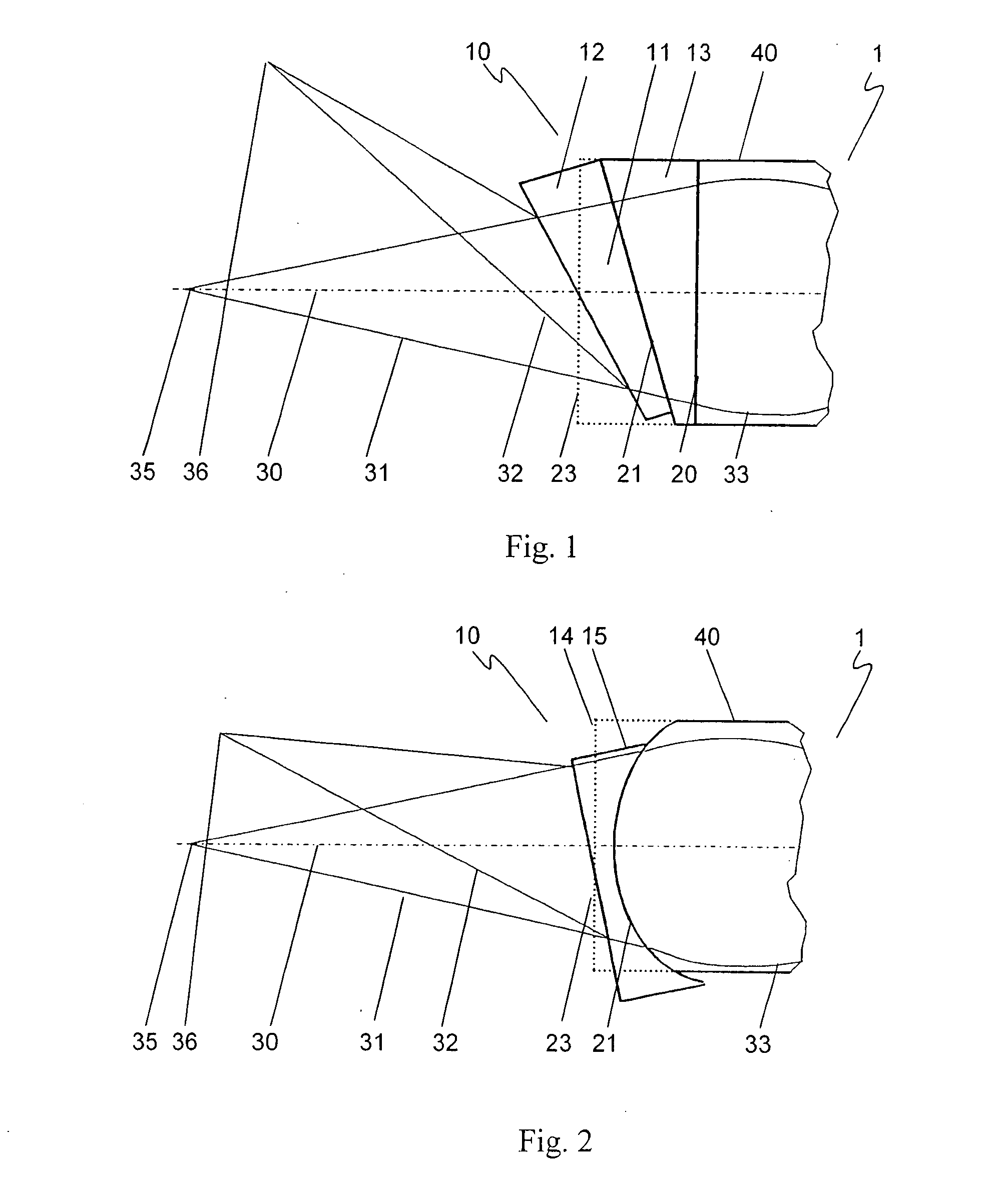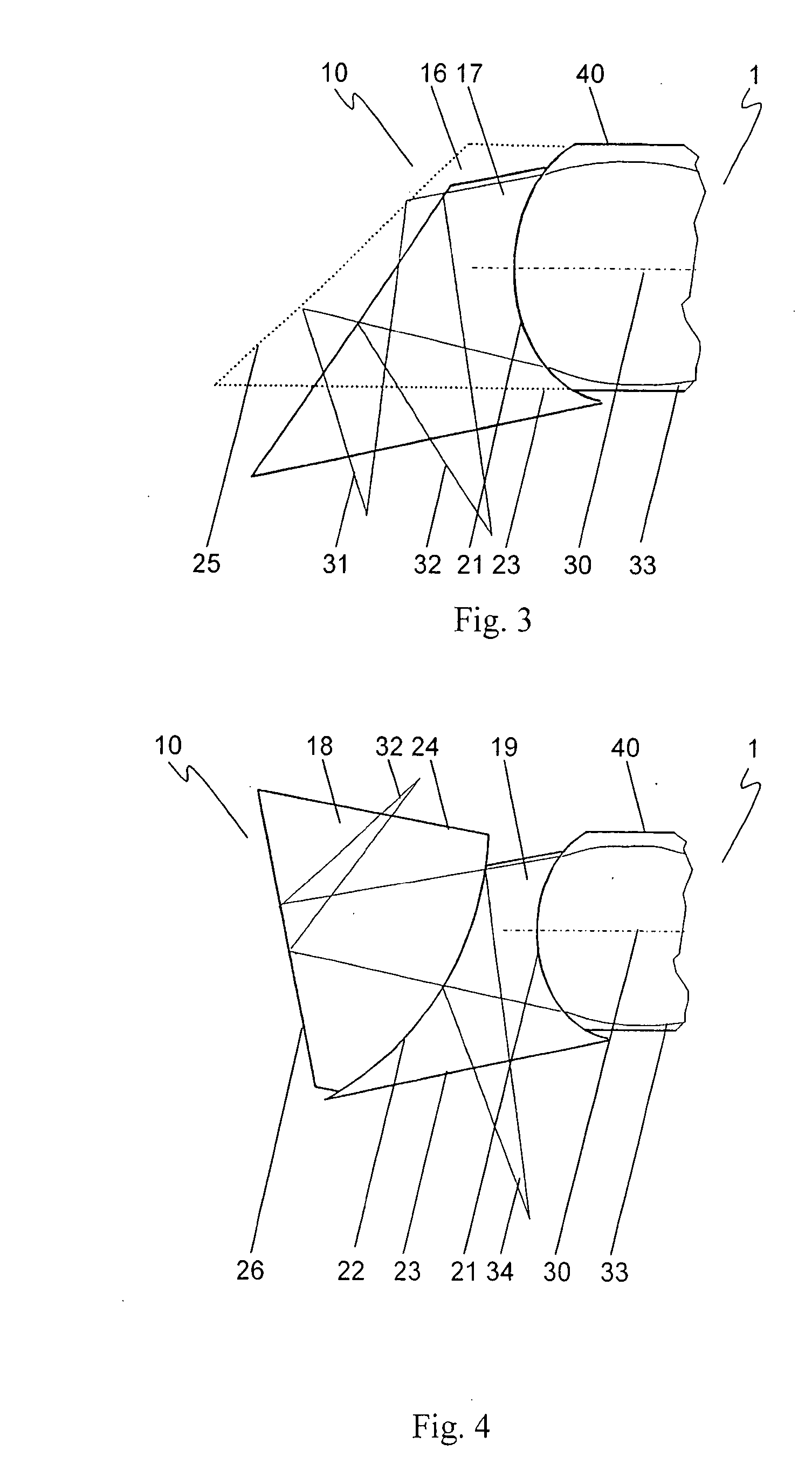Sensor objective
- Summary
- Abstract
- Description
- Claims
- Application Information
AI Technical Summary
Benefits of technology
Problems solved by technology
Method used
Image
Examples
Embodiment Construction
[0019]FIG. 1 shows a sensor objective 1 of an interferometric measuring device having a focusing element 40 and a deflection element 10 connected thereto. Focusing element 40 is implemented as a gradient index lens (GRIN). Deflection element 10 is composed of a first wedge-shaped component 13, which adjoins focusing element 40 at an interface 20, and a second wedge-shaped component 11, which adjoins first wedge-shaped component 13 at a planar interface 21. In this position of second wedge-shaped component 11, an incoming beam 33 incident parallel to a system longitudinal axis 30 exits from deflection element 10 at an exit surface 23 perpendicular to system longitudinal axis 30 and is relayed as an undeflected beam 31. The radiation is reflected by a surface of a measured object situated at a focal point 35 of undeflected beam 31 and fed along a reverse beam path into sensor objective 1 of an analysis unit of the interferometric measuring device (not shown).
[0020] The deflection ang...
PUM
 Login to View More
Login to View More Abstract
Description
Claims
Application Information
 Login to View More
Login to View More - R&D
- Intellectual Property
- Life Sciences
- Materials
- Tech Scout
- Unparalleled Data Quality
- Higher Quality Content
- 60% Fewer Hallucinations
Browse by: Latest US Patents, China's latest patents, Technical Efficacy Thesaurus, Application Domain, Technology Topic, Popular Technical Reports.
© 2025 PatSnap. All rights reserved.Legal|Privacy policy|Modern Slavery Act Transparency Statement|Sitemap|About US| Contact US: help@patsnap.com



